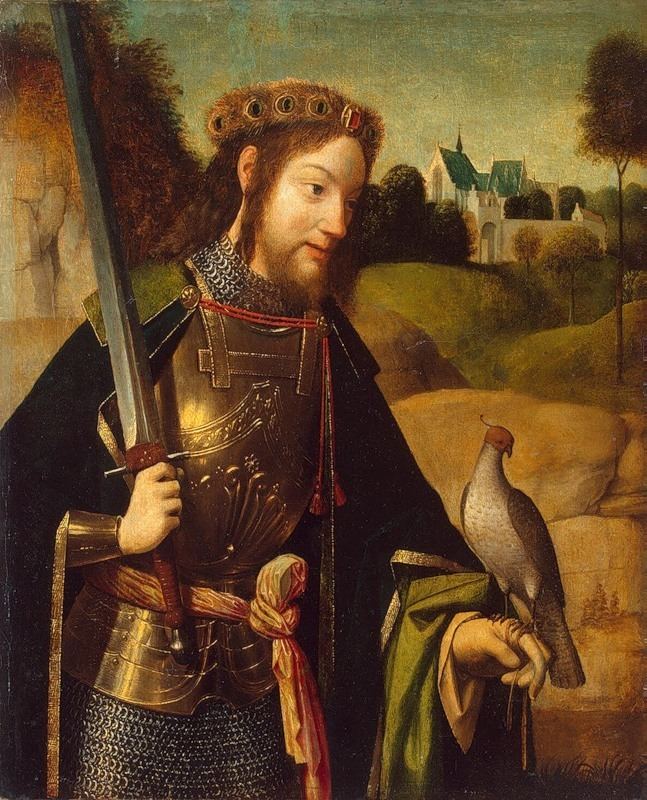Died 659 Feast October 1 | Name Bavo Ghent | |
 | ||
Venerated in Catholic ChurchEastern Orthodox Church | ||
bavo of ghent
Saint Bavo of Ghent (also known as Bavon, Allowin, Bavonius, and Baaf) (622–659) is a Roman Catholic and Eastern Orthodox saint.
Contents
Life
Bavo was born near Liège, to a Frankish noble family that gave him the name Allowin. His father was Pippin of Landen, the Mayor of the Palace of Austrasia.
A wild, young aristocrat of Brabant, he contracted a beneficial marriage, and had a daughter through it. He was a soldier, who led an undisciplined and disorderly life. Shortly after the death of his wife Bavo decided to reform after hearing a sermon preached by Saint Amand. Struck by the sermon, which was on the emptiness of material things, Bavo was converted to Christianity at Amand's convent.
For some time thereafter, Bavo joined Amand in the latter's missionary travels throughout France and Flanders. On one occasion, Bavo met a man whom he had sold into slavery years before. Wishing to atone for his earlier deed, Bavo had the man lead him by chain to the town jail. Bavo built an abbey on his grounds and became a monk. He distributed his belongings to the poor and lived as a recluse, first in a hollow tree and later in a cell in the forest by the Abbey.
He died at the Abbey in Ghent, in what is today Belgium.
Veneration
Bavo is the patron saint of Ghent, Zellik, and Lauwe in Belgium, and Haarlem in the Netherlands. His feast in the Catholic Church and the Orthodox Church is October 1.
He is most often shown in Christian art as a knight with a sword and falcon. The most popular scene is the moment of his conversion, which has many stories attached to it. Because he is so often shown with a falcon, he came to be considered the patron saint of falconry. In medieval Ghent, taxes were paid on Bavo's feast day, and it is for this reason he is often shown holding a purse or money bag.
According to Rodulfus Glaber, the city of Bamberg is named after him, with Bamberg meaning "Mount of Bavo".
Legacy
Several churches are dedicated to him, including:
His picture is also part of the Coat of Arms of the Antwerp suburb Wilrijk.
Rembrandt painted a Saint Bavo, dated between 1662 and 1665.
